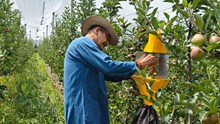
Most Indian coastal farmers are finding it difficult to make a steady income as returns from traditional fishing and farming are decreasing. There is a silent revolution taking place along the estuaries and backwaters from Andhra Pradesh's mangroves to Kerala's creeks. The small farmers are embracing mud crab farming as a new livelihood hope. Mud crabs are known for their flavor and high export demand, command high prices, particularly when they are grown to market size.
With low investment and simple training, mud crab farming can be a source of quick returns and huge profits. The production can be carried out in ponds, pens, or cages and is complete within a few weeks to months based on the method adopted.
Types of Mud Crabs Found in India
In India, two predominant species of mud crab are from the Scylla genus. Both the species are indigenous to coastal waters and hold high market value.
The larger of the two species, popularly referred to as the green mud crab, reaches shell widths of 22 cm and weights of up to 2 kg. The crabs are free living and possess polygonal patterns on their limbs, which makes them easy to recognize.
The red claw, however, is a little smaller, reaching 12.7 cm in diameter and 1.2 kg in weight. This species burrows into the ground rather than remaining on the surface like the green mud crab. It does not have the characteristic polygon patterns.
Both species are popular, not only in the domestic markets but also abroad, particularly in Singapore, Malaysia, and China.
Two Ways to Grow Mud Crabs
Farmers can culture mud crabs by two methods depending on their space, budget, and market intentions.
- Grow-Out Culture – Patience Pays
In this method, juvenile crabs with weights ranging from 10–100 grams are collected from wild sources and stocked in ponds for 3 to 6 months. The crabs are cultured to a marketable size of more than 500 grams.
Pond size typically varies from 0.5 to 2 hectares, and there should be bunds, water exchange, and fencing maintained. Crabs are stocked at a rate of 1 to 3 crabs per square meter and fed once a day with trash fish, boiled chicken offal, or clam meat. The feeding rate is approximately 5% of their body weight.
When crabs mature, partial harvest starts from the third month. Thinning the stock minimizes fighting and enhances survival.
- Fattening – Profitable and Quick
Fattening is most suitable for farmers seeking quick returns. In this process, soft-shelled crabs are purchased from local traders or fishermen and raised for 2 to 4 weeks until their shell hardens. These "hard crabs" command 3 to 4 times market price compared to soft crabs.
Fattening can be done in small ponds (0.025 to 0.2 ha), cages, or bamboo pens. The crabs are stocked at 0.5 to 2 crabs/m² depending on size. Large crabs above 550 g command a better price, thus best to concentrate on this size category.
Farmers can have 6 to 8 cycles of fattening annually and hence it is a viable income scheme. Dividing larger ponds into compartments facilitates better management of crabs of varying sizes and avoids mutual fighting. Supplying shelter like bamboo baskets or old tyres also minimizes cannibalism.
Feeding, Water Quality, and Care
Daily feeding is required for crabs with good foods such as trash fish, clam, or chicken dung. If feeding twice a day, most of the feed should be given during the evening.
Maintain water parameters within control:
-
Salinity: 15–25%
-
Temperature: 26–30°C
-
Oxygen: Greater than 3 ppm
-
pH: 7.8 to 8.5
Water should be clear, and bunds should be firm so that there is no escape. Bamboo or net fencing inclined inward keeps the crabs inside the pond.
Marketing and Harvesting
Harvesting crabs is possible when their shell is fully hard. Crabs are best harvested in the late evening or early morning when temperatures are low. Gently clean the crabs with brackish water to clean them of mud, and tie them well without injuring their legs. Store them in a shady and wet condition during transport to ensure they remain healthy and valuable.
Well-fed crabs can fetch farmers Rs. 400 to Rs. 1,200 per crab, depending on size and market demand. Export-grade crabs fetch even better prices.
Mud crab farming is not just a business, it is a lifeline for countless coastal families. With limited land, simple pond construction, and some care, farmers can make this venture a regular source of income throughout the year. If you are resident near the coast, estuary, or backwater, then this is your chance. Begin small, master the technology, and scale with confidence. With increasing export demand and government encouragement, mud crab culture may well be the pride of India's coastal industry.
















